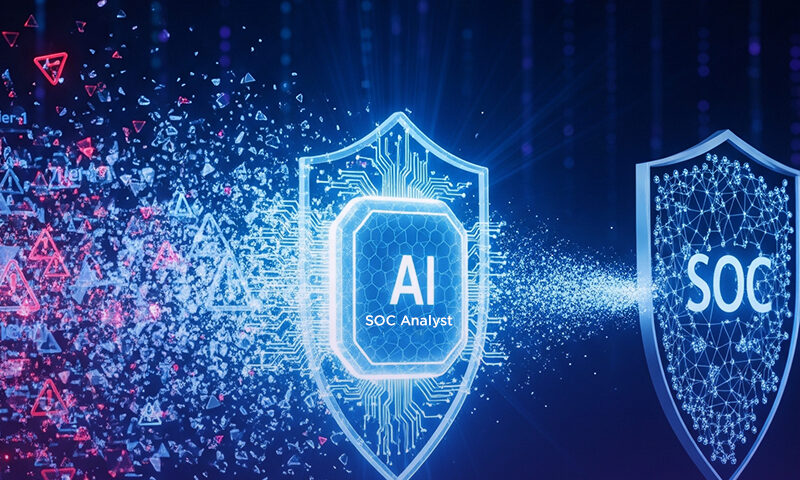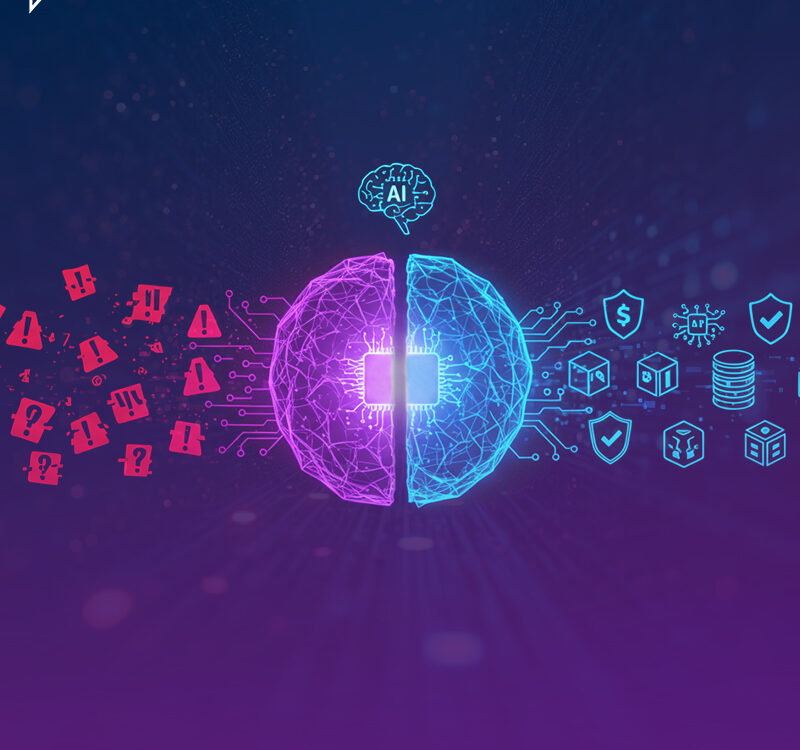
Stop Scaling Analysts – Start Redesigning the SOC
June 13, 2025
How Autonomous Security Workflows Are Redefining SOC Scalability
June 19, 2025
Stop Scaling Analysts – Start Redesigning the SOC
June 13, 2025
How Autonomous Security Workflows Are Redefining SOC Scalability
June 19, 2025Table of contents
Introduction: Manual Triage Is the SOC's Slowest Link
Every SOC knows the pain: the SIEM blinks with thousands of alerts, most benign, some dangerous, and all demanding human eyes. Traditionally, Tier-1 (L1) analysts have served as the frontline, combing through low-fidelity alerts to separate noise from signal. But that model, forged in the era of lower alert volumes and simpler threats, has buckled under today’s operational weight.
Analysts are burning out. Budgets are straining. And attackers are moving faster than ever. Manual triage once the backbone of SOC workflows is now the bottleneck. It’s time to rethink the architecture.
The Problem With Manual Triage
The legacy triage model relies on human intervention for:
- Reviewing raw SIEM alerts
- Performing basic enrichment (IP lookup, geo, reputation)
- Making judgment calls on escalation
- Logging context manually
While this approach may offer flexibility, it suffers from severe drawbacks:
- Latency: Alerts can sit for hours before even being reviewed.
- Inconsistency: Analyst skill levels vary, leading to unpredictable outcomes.
- Resource Drain: Skilled analysts spend time on low-value tasks.
- Human Error: Fatigue and repetition lead to mistakes, especially under pressure.
In short, manual triage is high-effort, low-impact—and increasingly unsustainable.
Why L1 Analysts Are Being Phased Out
It’s not about replacing people with machines. It’s about redirecting human talent to where it adds strategic value. Here’s why the L1 role is being reconsidered:
- Volume: A single SOC can face 10,000+ alerts per day.
- Cost: Recruiting, training, and retaining L1 analysts is a recurring expense.
- Turnover: L1 roles have one of the highest attrition rates in cybersecurity.
- Opportunity Cost: Every minute spent triaging is one less minute hunting or remediating.
Modern security operations need faster decision-making at scale. L1 analysts, confined by manual processes, simply can’t keep up.
Engineering Autonomous Triage Workflows
What replaces the L1 function isn’t a singular tool—it’s a redesigned architecture built around automation, intelligence, and continuous feedback.
Key Elements of an L1-Free SOC:
- Data Normalization and Centralization: Start by aggregating logs, alerts, and telemetry from all sources into a unified pipeline.
- Contextual Enrichment at Ingestion: Use automated systems to enrich every alert as it enters the pipeline. Threat intel, asset value, behavioral baselines—add it all upfront.
- Dynamic Decision Engines: Replace static playbooks with logic-based engines that can classify, suppress, escalate, or route alerts based on risk context.
- Feedback-Driven Learning: Analysts validate or correct outcomes, feeding back into the system for continual improvement.
- Auditability and Governance: Ensure every decision made by the system is traceable, explainable, and reversible.
This doesn’t eliminate human oversight. It elevates it.
Real-World Applications: How SOCs Are Doing It Today
Forward-thinking SOCs aren’t talking about eliminating L1—they’ve already done it. Here’s how:
Case Study 1: Mid-Sized Financial Institution
- Replaced manual triage with autonomous enrichment + scoring engine
- Result: 70% of daily alerts resolved without analyst involvement
- MTTR dropped by 55%, false positives down by 60%
Case Study 2: Global Healthcare Provider
- Deployed a dynamic decision layer to auto-suppress low-confidence alerts
- Human analysts only see ~15% of original alert volume
- Enabled shift from reactive ops to proactive threat hunting
The Role of Analysts in an L1-Free Future
Without the L1 layer, where do analysts focus?
- L2 Analysts step into more contextual investigation roles.
- Threat Hunters analyze patterns, behaviors, and hypothesis-driven searches.
- Incident Responders focus on containment, eradication, and recovery.
- Engineering Teams tune detection logic and refine automation models.
This isn't job elimination. It's job evolution. The L1 role doesn’t disappear—it matures.
Metrics That Matter: Proving the Model Works
SOCs transitioning away from L1 are seeing measurable impact:
- Reduction in MTTD/MTTR: 40% to 70% faster detection and response
- Decrease in Alert Fatigue: 50% to 80% fewer alerts per analyst
- Improved Analyst Satisfaction: Greater engagement with strategic tasks
- Lower Total Cost of Ownership (TCO): Leaner teams with higher output
These aren’t future projections. They’re happening now.
Conclusion: SOCs Need Architects, Not Alert Reviewers
As threat landscapes accelerate, security operations must respond with systems designed for resilience, not repetition. Manual triage and rigid L1 layers are holdovers from a slower time.
Engineering the next-gen SOC means building intelligent pipelines, redefining analyst roles, and committing to continuous learning. The future isn’t human vs. machine. It’s human-led systems that scale with precision.
RIP manual triage. The frontline of the SOC has moved upstream.




